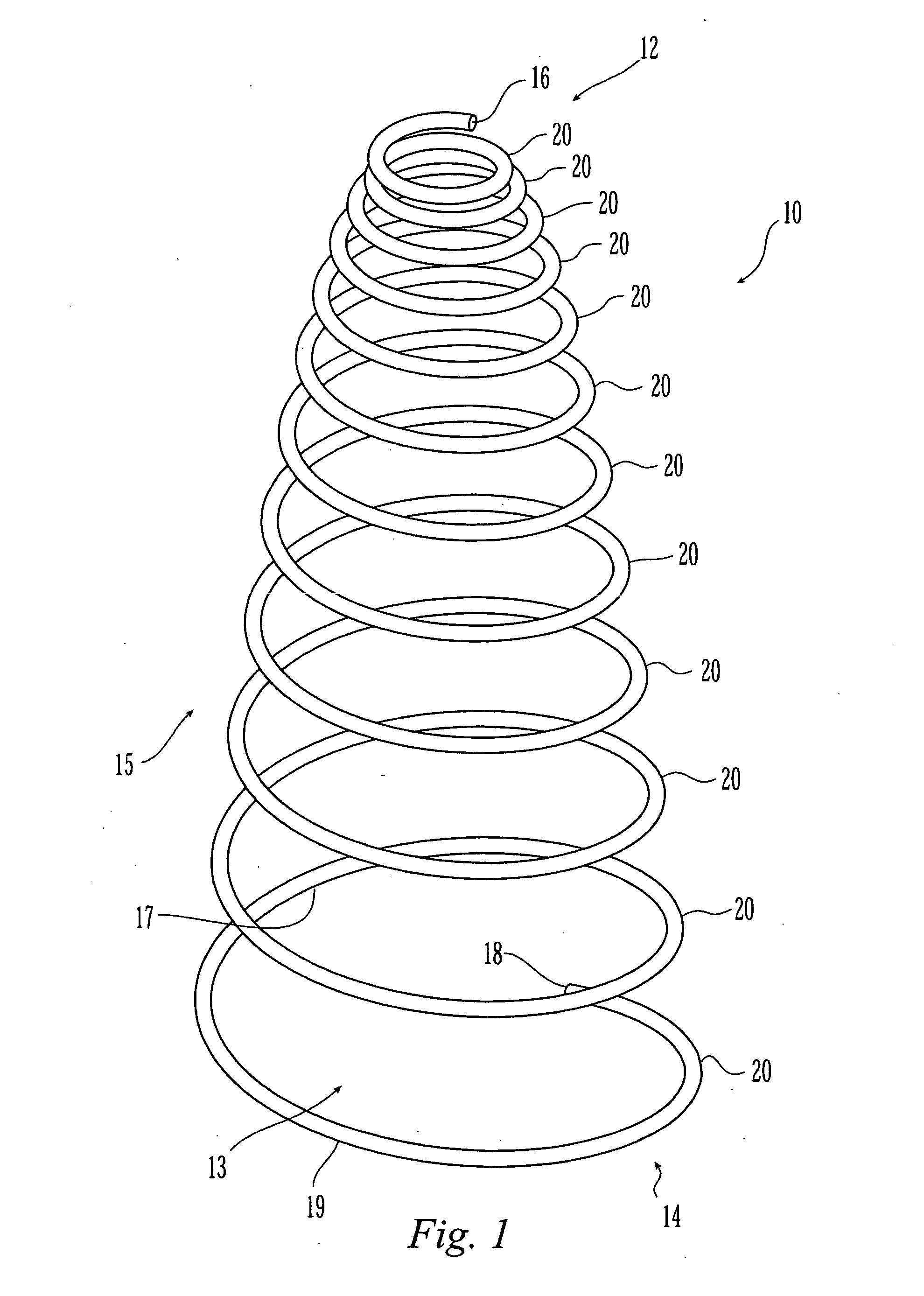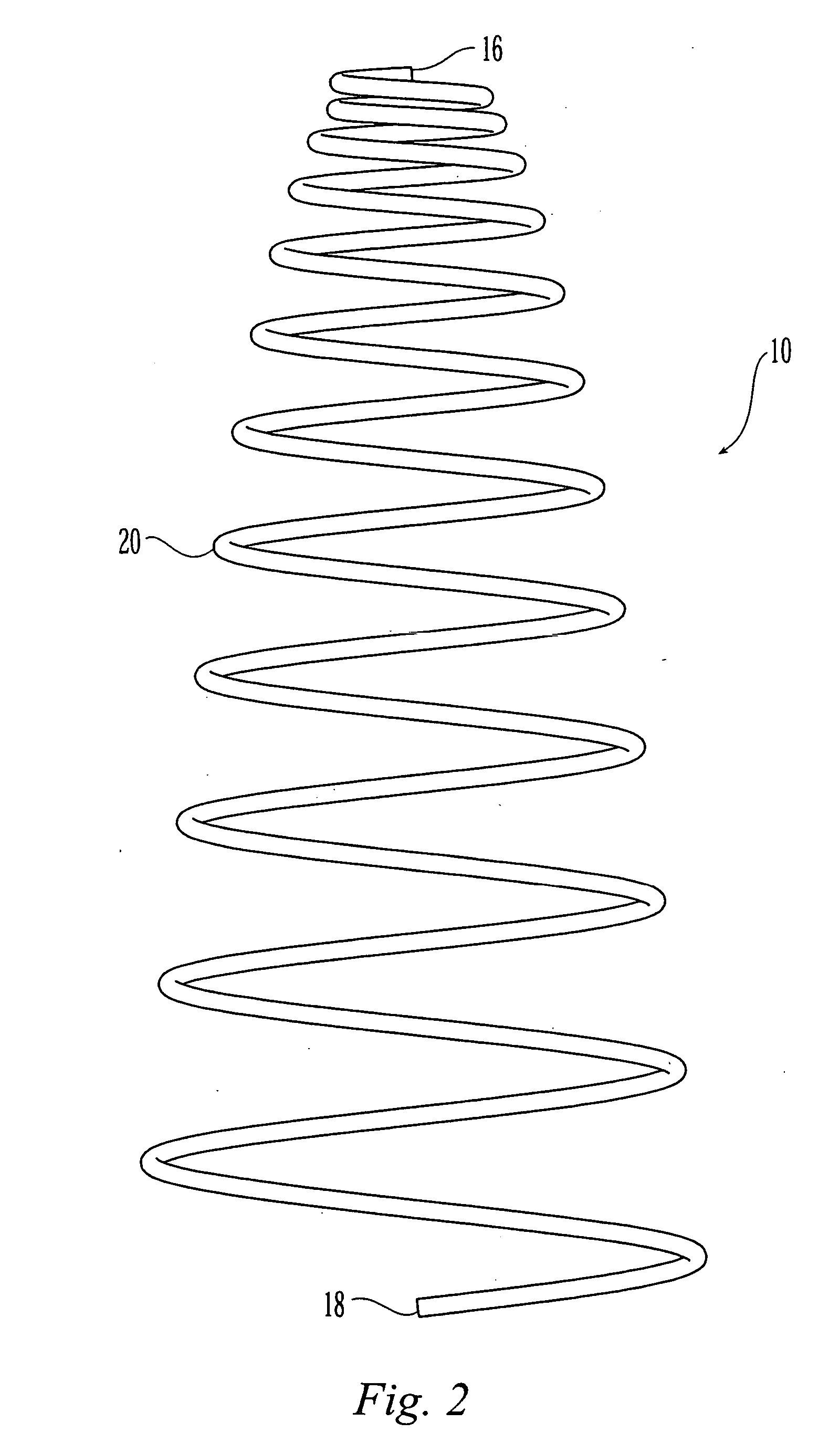Occlusive coil manufacture and delivery
a coil and occlusion technology, applied in the field of occlusion coil manufacture and delivery, can solve the problems of affecting the operation of the tubular organ, etc., and achieve the effect of restricting the movement of the wir
- Summary
- Abstract
- Description
- Claims
- Application Information
AI Technical Summary
Benefits of technology
Problems solved by technology
Method used
Image
Examples
Embodiment Construction
[0061] In the description which follows, any reference to either direction or orientation is intended primarily and solely for purposes of illustration and is not intended in any way as a limitation to the scope of the present invention. Also, the particular embodiments described herein, although being preferred, are not to be considered as limiting of the present invention.
[0062] The most preferred applications of the shape memory alloy members of the present invention are as vasoocclusive devices for filling or blocking anatomical defects, such as openings, in the vascular tree, e.g., holes in veins, arteries or the heart of a mammal. The coil portion of the device is placed or allowed to extend within the opening, where it is contacted by blood. Blood thrombosis upon contact with the coil thus fills in open areas to prevent further blood transport through the defect.
[0063] Referring to FIG. 1, there is shown a device or coil 10 that is formed in a conical spring configuration w...
PUM
 Login to View More
Login to View More Abstract
Description
Claims
Application Information
 Login to View More
Login to View More - R&D
- Intellectual Property
- Life Sciences
- Materials
- Tech Scout
- Unparalleled Data Quality
- Higher Quality Content
- 60% Fewer Hallucinations
Browse by: Latest US Patents, China's latest patents, Technical Efficacy Thesaurus, Application Domain, Technology Topic, Popular Technical Reports.
© 2025 PatSnap. All rights reserved.Legal|Privacy policy|Modern Slavery Act Transparency Statement|Sitemap|About US| Contact US: help@patsnap.com



